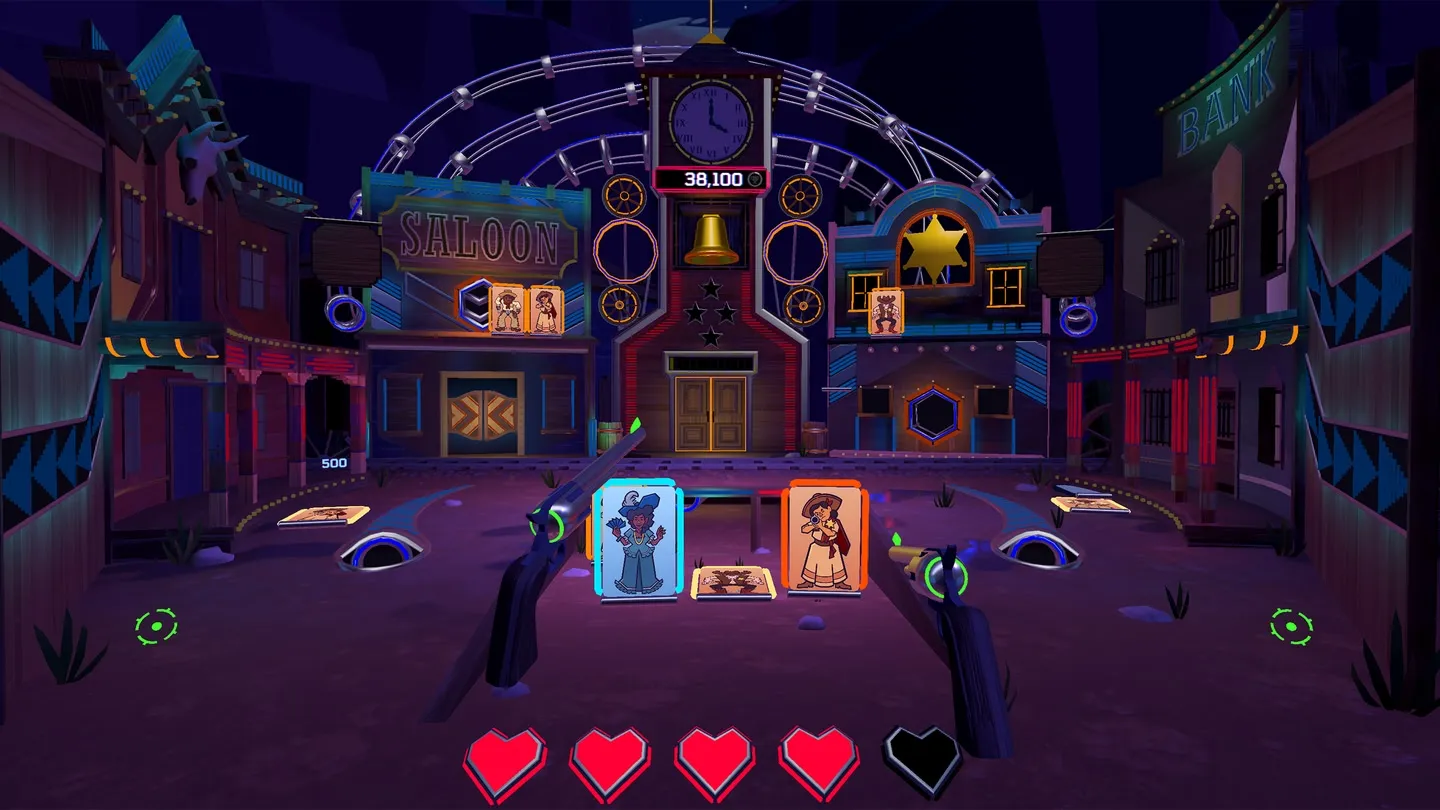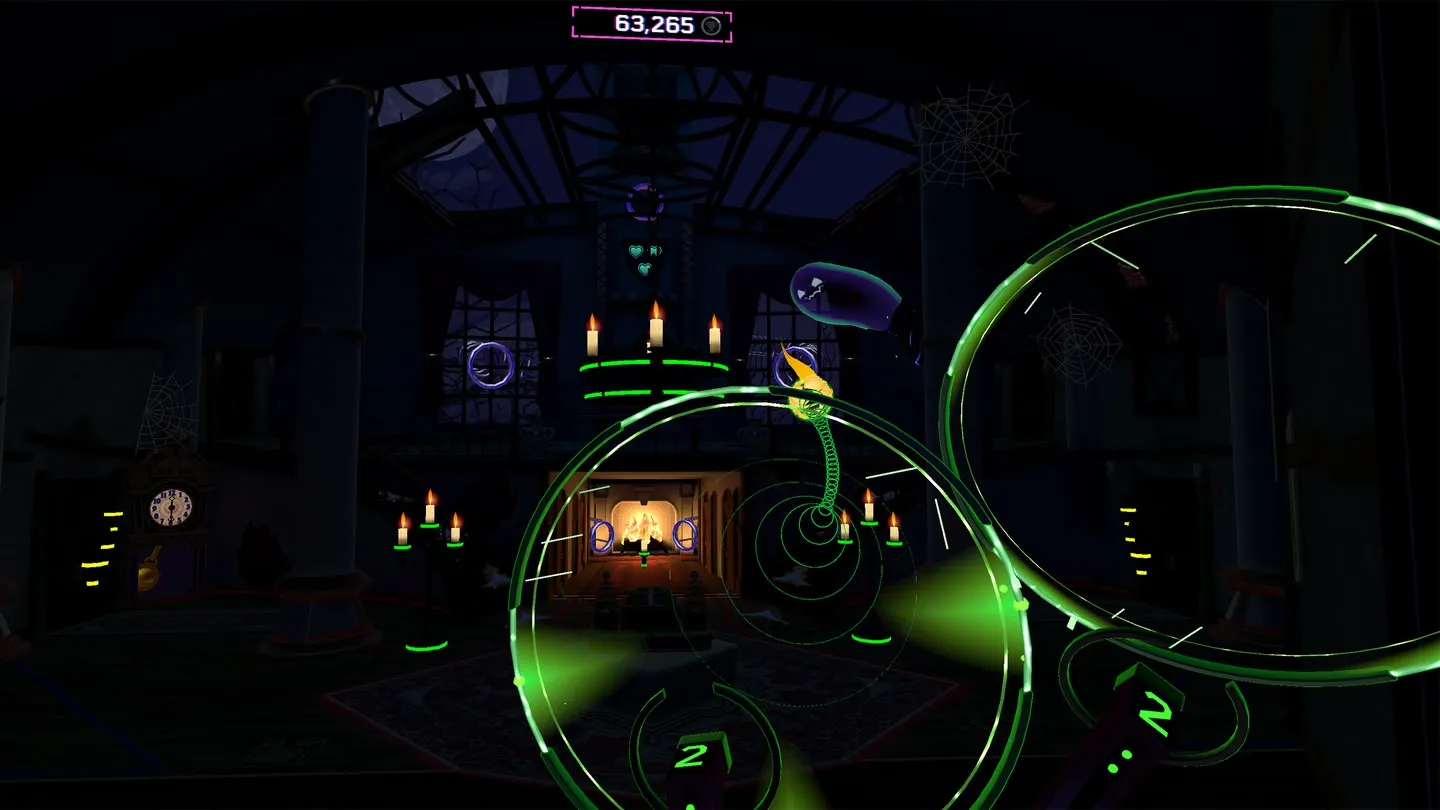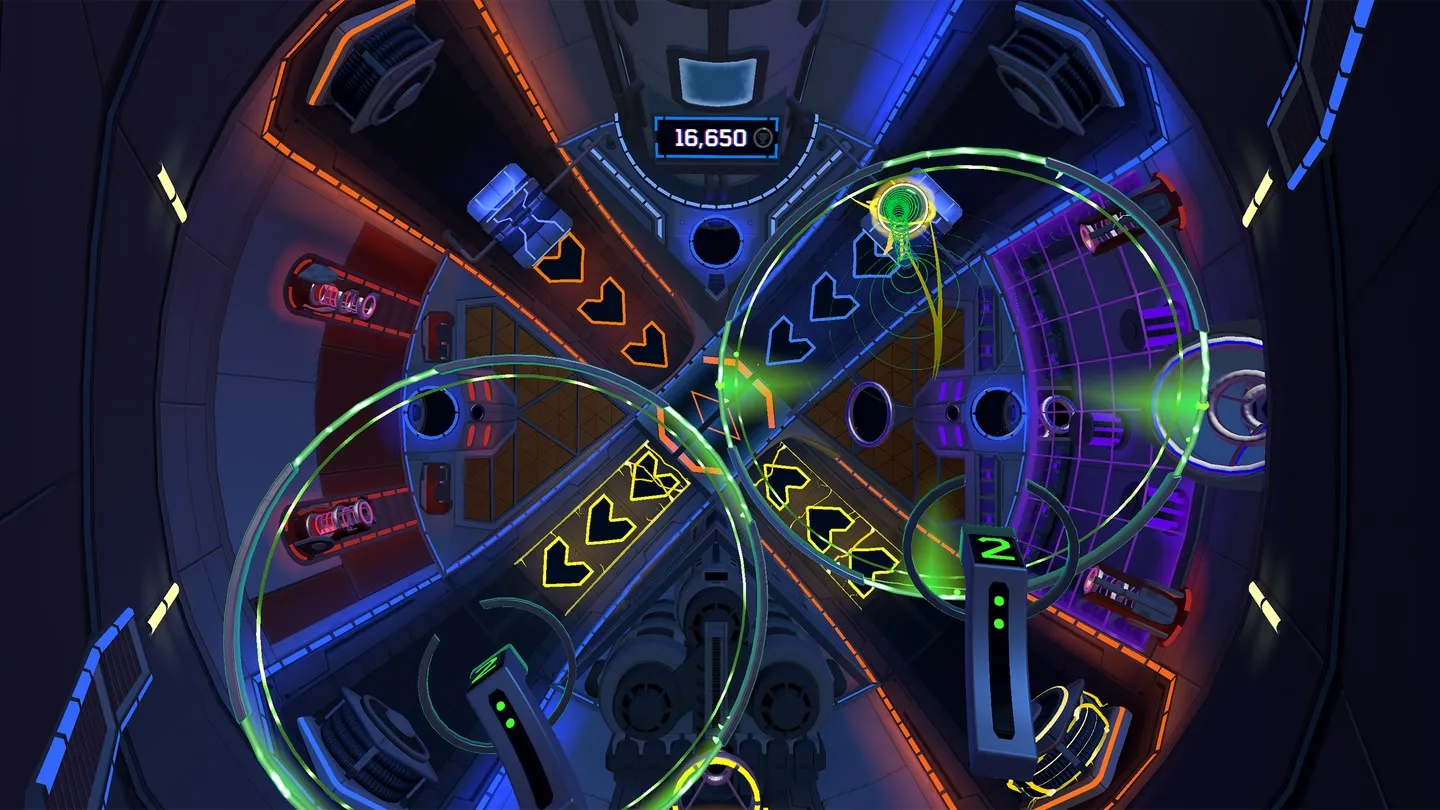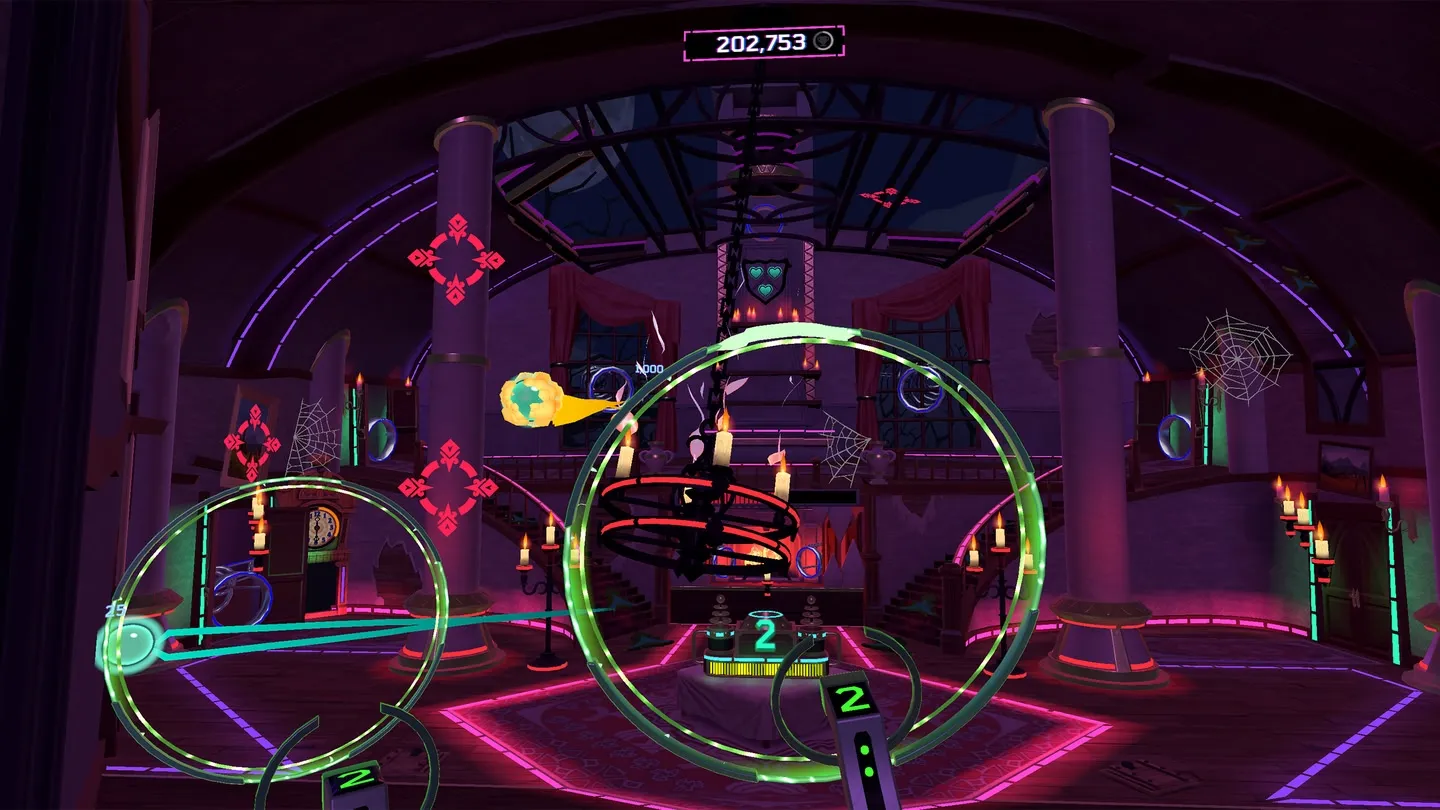Bounce Arcade offers a fresh and innovative spin on the classic pinball experience, reinventing it in the immersive world of virtual reality. Unlike typical pinball games, where players move flippers from a fixed vantage point, Bounce Arcade immerses players inside the machine, transforming them into active participants.
This shift enhances the tactile contact typical of pinball and allows for a more active role in pinball, where players can move around the environment to control the ball with their paddles.
The Meta Quest release by Bounce Arcade is quite significant. As VR technology advances, this title demonstrates how developers may use the medium to create unique gaming experiences beyond traditional limitations.
Bounce Arcade immerses players in a rich, interactive universe that feels nostalgic and original by incorporating bright, themed locales like a scary mansion and a pirate ship. This method not only appeals to fans of traditional arcade games but also enables a new generation to enjoy the joys of pinball via a novel lens, establishing a standard for future VR adaptations of the genre.
Innovative Gameplay Mechanics
Bounce Arcade’s gameplay mechanics are intuitive and engaging, attracting players to its unique pinball experience. The tutorial is an effective introduction, concisely demonstrating the basic controls without overwhelming novice players.
When you put on the VR headset, you’re taken through the basics of utilizing the paddles—essentially huge shields—to throw the ball into the vivid playfield. This first training is crucial because it sets the stage for the game’s mechanics and ensures that players are comfortable with the interactive aspect of the gameplay.
When players progress from the tutorial to the main game, they rapidly notice the unique paddle mechanics that set Bounce Arcade apart from standard pinball games. Instead of being bound to fixed flippers, players can move freely throughout the play area, influencing the ball’s trajectory with precise motions.
This dynamic interplay is reminiscent of arcade classics like Pinball FX2 but with a more intense, physically engaging twist. The ability to catch and deflect the ball with your paddles adds another layer of strategy, as players must time their moves to optimize scoring opportunities.
This experience is further enhanced by the main gameplay dynamics, particularly the incorporation of influence mechanics. Players can not only hit the ball but also apply directional spins, giving them precise control over its route. This is where the challenge lies—achieving high scores necessitates quick reflexes and a thorough understanding of the game’s mechanics and ball behavior.
Players may frequently find themselves in exciting ball moments of stress as they strive for the maximum multipliers, reminiscent of the high-stakes action in Zen Pinball. However, the combination of skill and strategy highlights the game’s complexity, as mastering these mechanics can take time, making each successful shot feel extremely satisfying.
Immersive Themed Environments
Bounce Arcade has four different themed tables, each meant to immerse players in a lively and participatory experience. These landscapes not only have distinct visual aesthetics but also a variety of gameplay mechanics that represent their respective themes. Gunpowder Gulch, Asteroid Outpost, Monster Manor, and Pirate’s Plunder are among the tables, each with a fresh take on the traditional pinball style.
Gunpowder Gulch sends players to the Wild West, where the gameplay focuses on cracking safes and blasting flying barrels. This table is notable for its engaging mechanics, which shift from standard pinball to action-packed shooting sequences. Players can convert their paddles into firearms, offering an extra layer of excitement as they fend off deputies and seek high scores. Combining quick reflexes and strategic targeting creates an environment reminiscent of arcade shooters and sets a solid foundation for newcomers to the game.
Moving on to the Asteroid Outpost, players will find themselves in a colorful space station full of challenges requiring resource management and skill. Players must harvest Arcadium from asteroids while repairing their ship, combining pinball mechanics with mini-games that resemble resource-gathering elements from games such as No Man’s Sky. The objectives are straightforward and varied, making it a gratifying experience as players interact with the environment to earn points and receive benefits.
Monster Manor, in contrast, provides an evocative experience full of terrifying challenges. Players use candles to navigate the dark and ward off ghosts, creating an engaging combination of pinball and adventure elements. The design promotes exploration, rewarding players seeking hidden objectives, similar to the quest-driven gameplay found in Castlevania games. The dynamic nature of the stage, in which the environment reacts to player activities, adds depth and keeps players on their toes.
Finally, Pirate’s Plunder encourages players to go on a treasure-hunting expedition across the high seas. With objectives such as loading guns and stealing treasure, this table emphasizes interaction with the environment, allowing players to engage in maritime combat. However, the flow of gameplay can become complicated due to occasional ambiguous objectives, which contrasts with the more intuitive concepts seen in the other tables. Despite this, the potential for excitement remains high, particularly for those who prefer incorporating a thematic narrative into their gaming experience.
Overall, the game’s charm is further enhanced by the variety of themed locales in Bounce Arcade, which captures the joy of pinball while injecting it with fresh, engaging challenges. Each table features unique gameplay mechanics and demonstrates VR’s creative potential in enhancing established gaming genres.
Striking Visuals and Soundscapes
Bounce Arcade’s visual design combines old aesthetics and current flair, successfully preserving the essence of classic pinball while exploiting virtual reality capabilities. Each of the four themed tables is beautifully made, with brilliant colors and rich features that transport players to their fascinating worlds.
The art style emphasizes clarity and legibility, allowing players to track the ball through the chaos effortlessly. This method is similar to the design ideas of other successful VR games, such as Beat Saber, in which visual cues enhance gameplay without overwhelming the player.
Lighting is crucial to the whole experience, with dynamic effects highlighting key gameplay moments. Each table is decorated with neon highlights and animated elements that come to life during multi-ball moments, creating an engaging spectacle that enhances the ball.
Particle effects enhance the mood, especially during exceptional events where bursts of light and color provide pleasing visual input. This level of attention to detail reinforces the game’s fun character and immerses players in a dynamic arcade environment that feels both nostalgic and fresh.
The audio design enhances the visual presentation and grounds the experience in authenticity. The sound effects are precisely produced, replicating the wonderful clinks and clanks in a real pinball game. Every sound, from the ball’s impact on the paddles to the cheery chimes of point scoring, contributes to the game’s immersive nature.
However, while the surrounding sounds adequately convey the thematic elements of each table, the background music fades into the background, lacking the memorability found in other arcade games. This contrast identifies an area for potential enhancement, as more prominent music might boost the ambiance, making it feel more cohesive and engaging.
Bounce Arcade’s visual and aural elements work together to produce a unified and fascinating experience that successfully transfers the joy of pinball to virtual reality. The attractive graphics and accurate sound design enhance immersion, allowing players to fully immerse themselves in Velan Studios’ whimsical worlds.
Ball Physics and Control Dynamics
The mechanics governing ball movement and speed in Bounce Arcade are crucial to the overall gameplay experience, and they excel and fail in different ways. The ball physics is intended to simulate the unpredictable nature of actual pinball, where factors such as angle and speed can significantly alter the trajectory.
While the game generally succeeds in creating a pleasing sense of movement, some players have reported anomalies that can break immersion. For example, there are certain moments when the ball performs slower than expected, which can irritate high-pressure situations requiring quick reflexes. This random sluggishness can detract from the overall fluidity expected of a title meant to take advantage of VR’s capabilities.
Control responsiveness is another important factor influencing the player experience in Bounce Arcade. The game uses a unique paddle feature that allows players to freely move their paddles to control the ball’s movement. This amount of interactivity creates a learning curve since players must adjust to being a mobile bumper rather than reacting from a fixed position.
The controls are usually intuitive, allowing for a quick grasp of the basics, similar to the learning curve in games like Rocket League, although mastering aerial maneuvers takes practice. However, the precision required to correctly strike targets can intimidate newcomers. While the game rewards good play, the complexity of mastering the controls can occasionally lead to moments of frustration, especially when attempting to execute intricate techniques amidst the chaos of gameplay.
Overall, while Bounce Arcade provides an engaging foundation in terms of physics and control dynamics, the occasional disparities in ball movement and the steep learning curve for control precision highlight areas for improvement. Balancing these elements could enhance the game’s accessibility and depth, attracting a broader spectrum of players, from casual gamers to seasoned pinball fanatics.
Assessing Replayability and Longevity
When assessing Bounce Arcade’s replayability, one must consider its content limits, specifically the number of themed tables and the absence of progression systems. Currently, the game only has four distinct environments: Gunpowder Gulch, Asteroid Outpost, Monster Manor, and Pirate’s Plunder.
The restricted choices might lead to stagnation for players looking for variety, even if each table offers unique gameplay mechanics and challenges. Unlike titles like Pinball FX3, which has many tables and regular DLC updates, Bounce Arcade’s current offering feels fairly thin and might use more content to keep players interested over time.
Furthermore, the absence of a strong progression mechanism exacerbates the problem. Players may find themselves at a plateau after mastering the present tables, as there is no new unlocked content, advanced moves, or additional layer to keep the gameplay fresh. This lack of incentives for continuous play starkly contrasts other games in the genre that reward skill improvement and exploration, making long-term engagement difficult to maintain.
However, the game has leaderboard features that appeal to players’ competitive nature. High-score chasing can be a powerful motivation, especially for people who thrive in competition. Seeing recognizable names on the worldwide leaderboard can motivate players to improve their skills and aim for higher scores.
This component of player involvement is reminiscent of arcade classics when rivalry drew many players back for “just one more game.” While leaderboard elements add some replay value, they may not be enough to compensate for the restrictions in content and growth, leaving dedicated players wanting more depth and variety in their experience.
Comprehensive Final Thoughts
Bounce Arcade is an intriguing but incomplete debut into virtual reality pinball, with both noticeable virtues and substantial weaknesses. On the plus side, the bright-themed surroundings and engaging gameplay mechanics provide players with a fresh take on traditional pinball.
The immersive sights and sound design effectively convey the essence of an arcade layer, while the free-moving paddles create a dynamic control mechanism that enhances player participation. These elements are reminiscent of popular VR games such as Beat Saber, emphasizing involvement and immersion.
However, the game has significant flaws. The small number of tables limits replayability, and the lack of a progression mechanism gives players little reason to continue after mastering the available content. Variations in ball physics and control responsiveness exacerbate this stagnation, which can disturb an otherwise seamless gameplay experience. Compared to other pinball games, such as Zen Pinball, which constantly expand their features, Bounce Arcade feels underdeveloped regarding content depth.
Regarding suggestions, Bounce Arcade may be most appealing to casual gamers and VR fans looking for a fresh twist on pinball. Those who thrive on competitive high-score chasing may also find joy in the lead leaderboard features. However, the game’s existing restrictions indicate that it might benefit immensely from future improvements, potentially including new tables and progression mechanics to enhance long-term involvement. With the correct support from its developers, Bounce Arcade has the potential to become a more full and enjoyable experience, making it a must-see for fans of both pinball and VR gaming.
The Review
Bounce Arcade
Bounce Arcade brilliantly revitalizes the pinball genre in VR with its vivid scenery and engaging mechanics. However, the restricted number of tables and the lack of progression systems limit its replayability. While the rich visuals and sound design enhance the experience, ball mechanics and control response variations can frustrate players. It provides a fun but relatively limited experience that might benefit immensely from future content upgrades.
PROS
- Engaging themed environments with vibrant visuals.
- Unique free-moving paddle mechanics enhance interactivity.
- Compelling leaderboard features for high-score chasing.
CONS
- Limited number of tables reduces replayability.
- Lack of progression systems feels stagnant.
- Inconsistencies in ball physics and control responsiveness.





















































